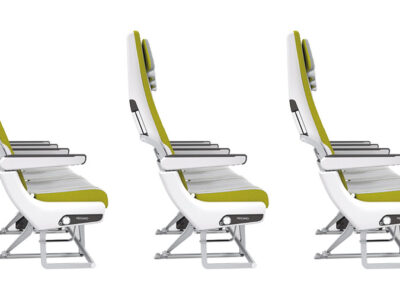(Bloomberg) —
Facilitating air flow into and throughout a home is important for human health. Indoor air pollution from cooking, dust and cleaning products is bad for your well-being, especially if you spend an extended amount of time inside.
Air flow is also important for temperature. Too little ventilation, and a home can easily overheat; when moisture can’t escape, there are also issues with condensation. Too much ventilation, and it can be difficult to keep a space warm in the winter.
On a basic level, ventilation can be as simple as opening a window or a door. But more sophisticated tactics can also improve the efficiency of air conditioning or central heating systems, depending on season and climate. Here’s what you need to know.
What are your options?
Broadly speaking, ventilation can be divided into two types: passive and active. Older homes, dating back to the first part of the 20th century and earlier, were generally designed with passive ventilation in mind. Chimneys, fireplaces, sash windows and vents all ensured there was air flow throughout a house.
“Most existing homes need very little mechanical ventilation except maybe an extractor fan in the kitchen and the bathroom because gaps, vents [and] chimneys will provide natural ventilation to the rest of the building,” says Brian Horne, technical knowledge lead at the Energy Saving Trust, a UK nonprofit.
Many older homes, and even some modern houses, are also built with what’s known as “air bricks” — special bricks with small holes for ventilation that allow air to circulate. These are usually placed about six feet apart and installed at a relatively low level in a wall. Some homes have trickle vents (small holes) drilled directly into exterior walls.
As passive ventilation goes, air bricks are also relatively easy and cheap to install in a home that’s already been built, but there are some downsides. They improve daytime airflow less than some other options, and during windy days air bricks can make a home drafty. They’re also less compatible with modern and highly-insulated housing, where builders often seek to block gaps in the interest of energy-efficiency. Active systems allow more control, though they are more expensive and use energy to run.
Read Next: Europe’s Housing Is Not Heat-Ready
When do you need active ventilation?
Many houses have extractor fans in bathrooms and kitchens to remove humidity and pollutants from cooking, which is one form of active ventilation. For highly insulated buildings, though, more comprehensive ventilation can be necessary to augment natural air flows.
“You need to have a proper mechanical ventilation system for that type of building because there’s just no airflow, so you need to push the air through the building,” says Hannah Giddings, head of resilience at the UK Green Building Council, an industry group. This is particularly true for new homes with high levels of airtightness, like those built to a Passivhaus standard, which specifies a low level of natural air flow to improve efficiency.
Technically speaking, active ventilation involves using fans to either extract internal air, which is then naturally replaced with fresh air from the outside, or to supply outdoor air directly, replacing indoor air that’s pushed out through vents or other openings. Extractive ventilation tends to work best in cold and damp climates, while supply ventilation works better in hotter and less humid climates, where it’s less likely to lead to condensation and mold problems. Many modern homes will come with an active ventilation system, but it can also be added to an existing home by a professional installer, especially if extra insulation is also being added.
What is mechanical ventilation with heat recovery?
A more sophisticated option, particularly for cold climates, is mechanical ventilation with heat recovery (MVHR). This seeks to minimize the amount of energy needed to heat cold air from the outside by extracting heat from warm indoor air before it’s released outdoors.
This type of ventilation works best in well-insulated homes, says Carrie Behar, head of sustainability at Useful Simple Trust, a building engineering consultancy. “Otherwise what will happen is that you’ll be losing so much heat through the walls and the windows that you’re not getting the benefit of that recovery system, so it doesn’t become cost effective to run.”
MVHR systems are more expensive to install and run than standard extractive ventilation, and they can be disruptive and difficult to add to existing buildings: A system of ducts needs to be installed, which requires both roof and ceiling space. MVHR systems also need regular maintenance. On the upside, they lead to less heat loss in the ventilation process, reducing heating bills.
How does ventilation work with heat pumps?
An MVHR system can be combined with a heat pump to create highly efficient building heating. “The heat pump takes heat from the exhaust air being pumped out of your house and upgrades it to a higher temperature for heating the cold incoming air. This makes it more efficient at heating your home than a standard MVHR system,” Horne says.
This combo system works best when it’s the only thing being used to heat the home: no radiators or underfloor heating. It can also be used to heat hot water, if the demand from both heating and hot water is low enough for the heat pump to manage both.
To contact the author of this story:
Olivia Rudgard in London at orudgard@bloomberg.net
© 2023 Bloomberg L.P.





